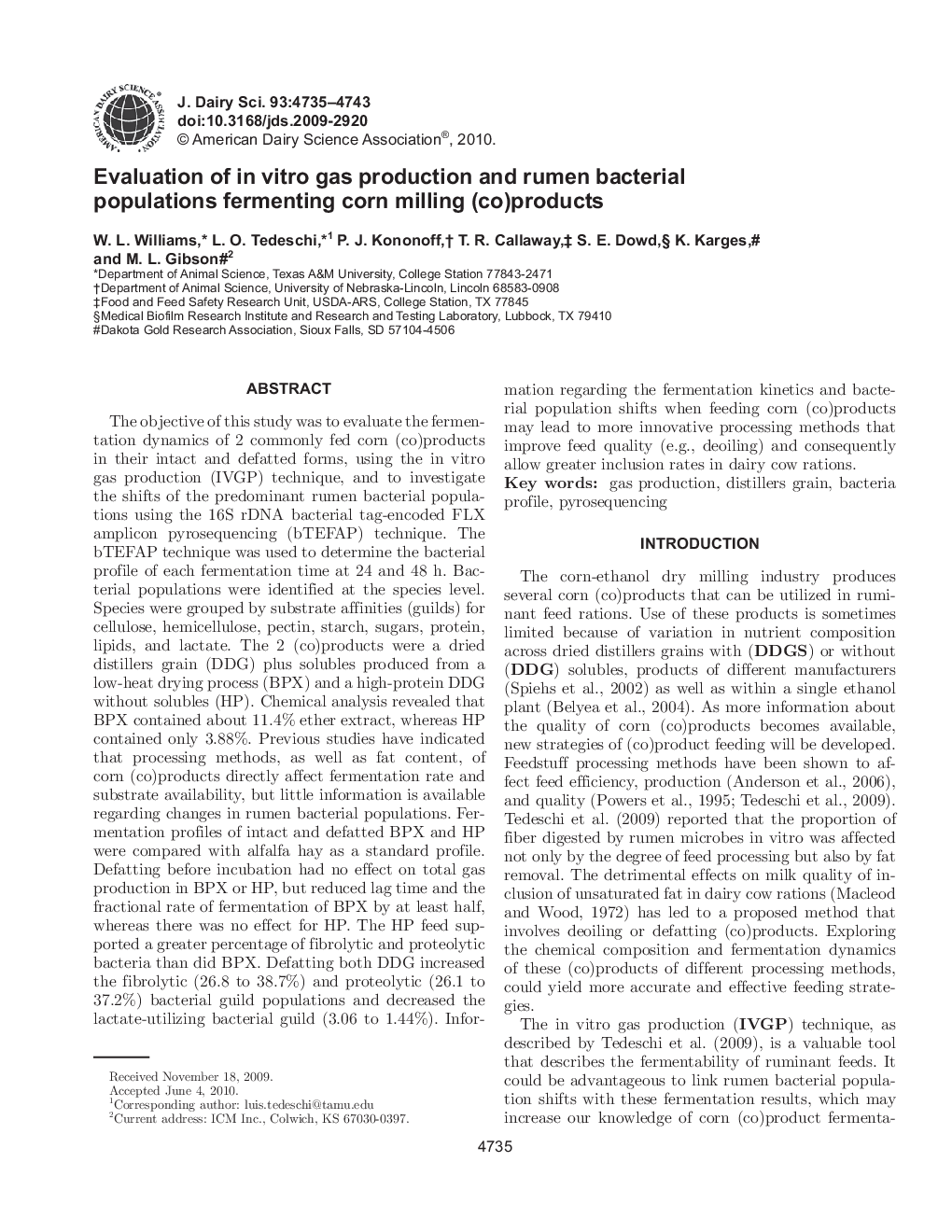| کد مقاله | کد نشریه | سال انتشار | مقاله انگلیسی | نسخه تمام متن |
|---|---|---|---|---|
| 5789883 | 1108092 | 2010 | 9 صفحه PDF | دانلود رایگان |
عنوان انگلیسی مقاله ISI
Evaluation of in vitro gas production and rumen bacterial populations fermenting corn milling (co)products
دانلود مقاله + سفارش ترجمه
دانلود مقاله ISI انگلیسی
رایگان برای ایرانیان
موضوعات مرتبط
علوم زیستی و بیوفناوری
علوم کشاورزی و بیولوژیک
علوم دامی و جانورشناسی
پیش نمایش صفحه اول مقاله

چکیده انگلیسی
The objective of this study was to evaluate the fermentation dynamics of 2 commonly fed corn (co)products in their intact and defatted forms, using the in vitro gas production (IVGP) technique, and to investigate the shifts of the predominant rumen bacterial populations using the 16S rDNA bacterial tag-encoded FLX amplicon pyrosequencing (bTEFAP) technique. The bTEFAP technique was used to determine the bacterial profile of each fermentation time at 24 and 48Â h. Bacterial populations were identified at the species level. Species were grouped by substrate affinities (guilds) for cellulose, hemicellulose, pectin, starch, sugars, protein, lipids, and lactate. The 2 (co)products were a dried distillers grain (DDG) plus solubles produced from a low-heat drying process (BPX) and a high-protein DDG without solubles (HP). Chemical analysis revealed that BPX contained about 11.4% ether extract, whereas HP contained only 3.88%. Previous studies have indicated that processing methods, as well as fat content, of corn (co)products directly affect fermentation rate and substrate availability, but little information is available regarding changes in rumen bacterial populations. Fermentation profiles of intact and defatted BPX and HP were compared with alfalfa hay as a standard profile. Defatting before incubation had no effect on total gas production in BPX or HP, but reduced lag time and the fractional rate of fermentation of BPX by at least half, whereas there was no effect for HP. The HP feed supported a greater percentage of fibrolytic and proteolytic bacteria than did BPX. Defatting both DDG increased the fibrolytic (26.8 to 38.7%) and proteolytic (26.1 to 37.2%) bacterial guild populations and decreased the lactate-utilizing bacterial guild (3.06 to 1.44%). Information regarding the fermentation kinetics and bacterial population shifts when feeding corn (co)products may lead to more innovative processing methods that improve feed quality (e.g., deoiling) and consequently allow greater inclusion rates in dairy cow rations.
ناشر
Database: Elsevier - ScienceDirect (ساینس دایرکت)
Journal: Journal of Dairy Science - Volume 93, Issue 10, October 2010, Pages 4735-4743
Journal: Journal of Dairy Science - Volume 93, Issue 10, October 2010, Pages 4735-4743
نویسندگان
W.L. Williams, L.O. Tedeschi, P.J. Kononoff, T.R. Callaway, S.E. Dowd, K. Karges, M.L. Gibson,